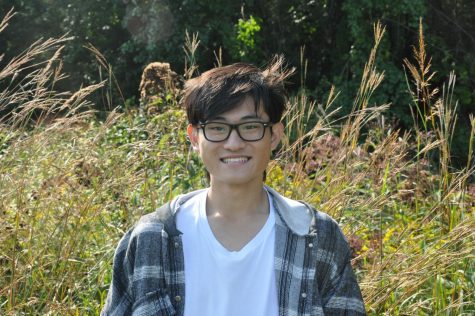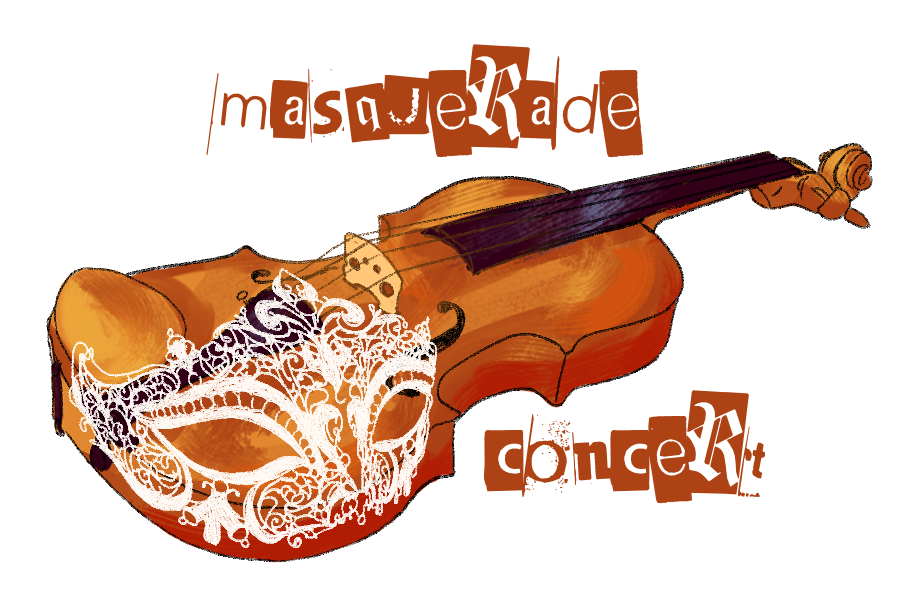Masquerade Concert: Covering the Era of Virtual Concerts
Credit: Theo Ghosh
The Wayland High School Orchestra had their first in-person concert on October 27, 2021 in two years. Unfortunately, their audience was students only. “Having an audience there to applaud and cheer is still a million times better than no audience at all,” senior cellist Samuel de los Reyes said.
On October 27, 2021, the Wayland High School Orchestra held their annual masquerade concert. It was held indoors and was the first indoor concert since the pandemic. To the performers, the difference between the virtual concerts and in-person concerts were like fire and ice.
“As a conductor, and as a performer, getting that feedback from your audience, and really getting that sense of giving your music to someone is invaluable,” Fine Arts Department Head Susan Memoli said. “Without that, you’re playing and that has its own value, but it doesn’t have the same effect or impact on the performers as it does when you have a live audience that’s clapping for you.”
Not only is there a difference in meaning, but there’s also a difference in quality.
“It’s a really different experience playing live in front of an audience than getting a video recording of it,” senior cellist Samuel de los Reyes said. “With the recording, it’s possible to do many different takes and just pick the better one, but live, whatever’s played you just have to go with it. There’s more pressure, but I feel it pays off more in the end.”
Even though the concert was in person, there were still many restrictions.
“The students [were] distanced by three feet,” Memoli said. “They [did] not sharing music stands. We [used] one entry door for each group, the backstage door and a separate exit door so we’re all following that same pattern. And [it was] students only, sixth through twelfth grade, no parents.”
The orchestra played Coleridge Taylor’s Fourth Novelletten and Shostakovich String Quartet no. 8, movement 1 + 2, arranged for string orchestra, but because the audience had no parents, it ended with a less explosive applause.
“There was definitely less applause after each song,” senior violinist Angela Yan said. “I don’t think it’s because the parents are more invested in the music though. It’s more like they are more invested in their children and applaud out of obligation.”
Even though the applause after the songs was less explosive, the focus was on regaining the sense of community that was lost throughout the pandemic.
“You normally share a stand so you really are interacting with that person next to you really closely whether consciously or unconsciously,” Memoli said. “That spacing and everyone on their own stand is extremely isolating as a musician that’s [used to] a communal experience. We specifically set it up so that kids could see that continuity.”
Without the parents, some students felt they had more fun. They both enjoyed the music and had a memorable time with their fellow musicians.
“We even got a stand up comedy bit in the middle of the concert,” Yan said. “Mrs. Tandon and Mrs. Memoli were happy as well as the students and that’s pretty much what matters. I also heard some middle schoolers say, ‘that was so good,’ which is pretty nice to hear.”
The masquerade concert was one step closer to the normal concerts that everyone enjoys. In that way, many viewed it as an absolute success.
“Even though it was still a bit different from before the pandemic, we still got to express ourselves and our hard work through the concert,” de los Reyes said. “Isn’t that the goal in the end?”
Your donation will support the student journalists of Wayland High School. Your contribution will allow us to purchase equipment, cover our annual website hosting costs and sponsor admission and traveling costs for the annual JEA journalism convention.

Brasen Chi, Class of 2022, is a third year reporter and the Arts and Entertainment editor for WSPN. In school, he tends to zone out and be a little forgetful...





![Last Wednesday, the Wayland School Committee gathered to discuss a number of topics regarding the health curriculum and Innovation Career Pathway course. Another large topic of conversation was the ways to potentially mitigate distracting cell phone usage. "These [phones] are going to distract your learning and social relationships," Superintendent David Fleishman said. "That's concrete right there."](https://waylandstudentpress.com/wp-content/uploads/2025/06/Screenshot-2025-06-04-at-9.49.31 PM-1200x886.png)



























![Troy Hoyt finishes the Boston Marathon, running for the Hoyt Foundation. T. Hoyt is the son of Hoyt Foundation CEO Russ Hoyt.
“[Running a marathon] might seem like a big thing, when it’s presented to you at first, but if you break it up and just keep telling yourself, “Yes, you can,” you can start chipping away at it. And before you know it, you’ll be running the whole 26 miles, and you won’t even think twice about it.” T. Hoyt said.](https://waylandstudentpress.com/wp-content/uploads/2025/04/C36E8761-1CBB-452E-9DF2-543EF7B1095E_1_105_c.jpeg)











































